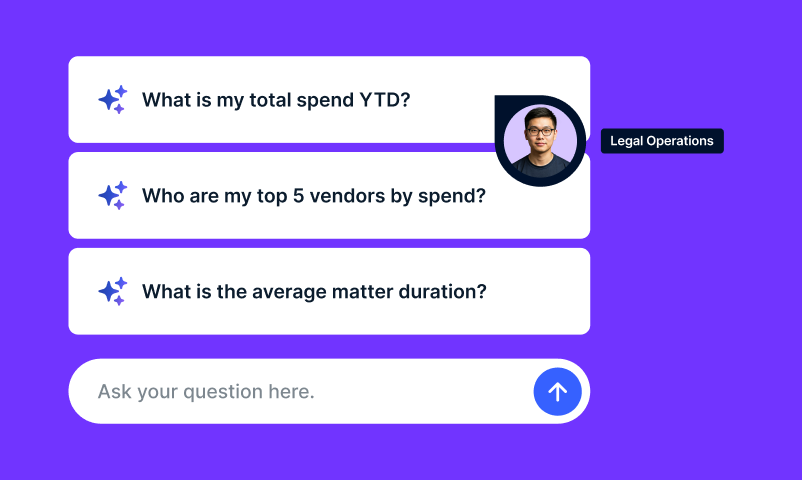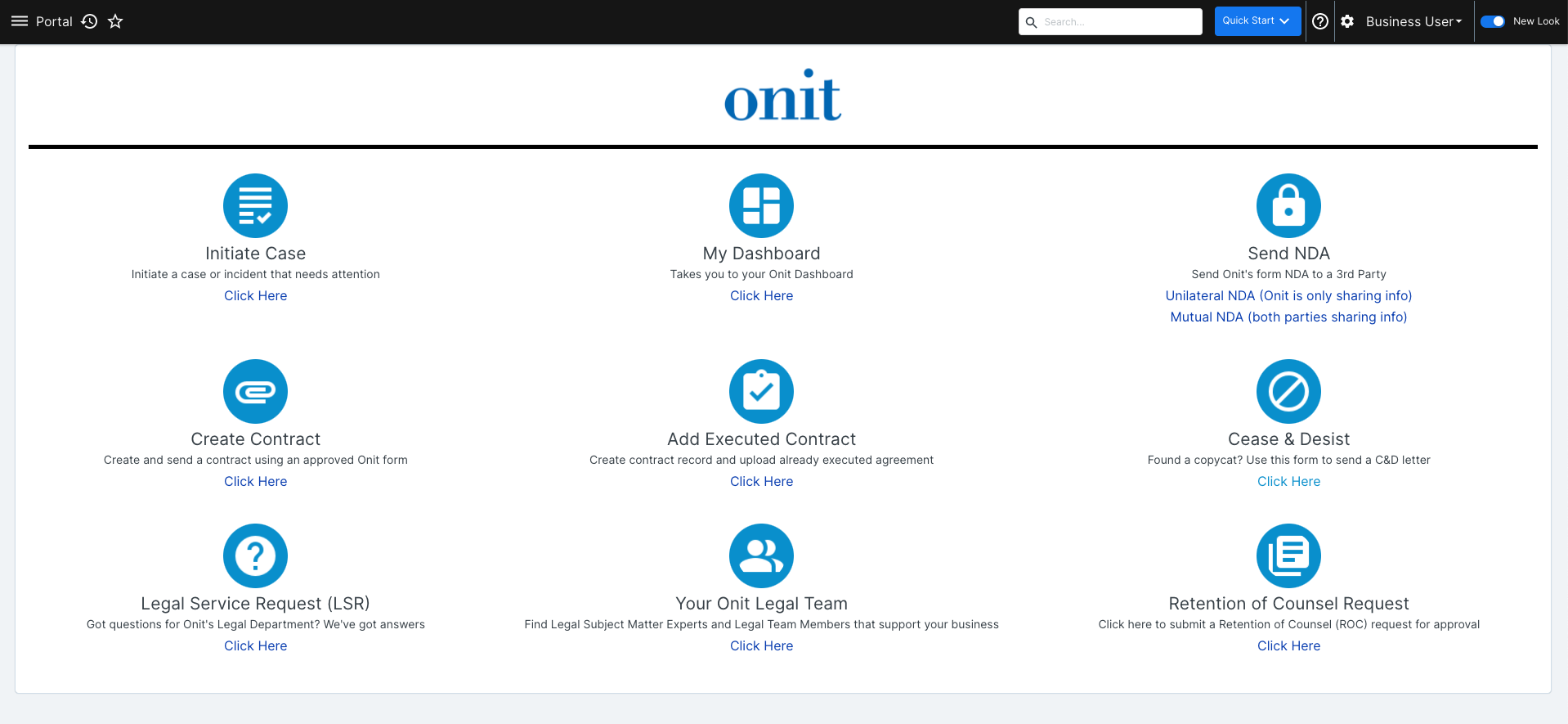
Streamlining the new business intake process and automating inefficient processes are high on the list of priorities for most busy corporate legal departments today. Any technology that can help with legal service requests and allow users from other business units to engage in self-service tends to be welcomed with open arms.
Enter Onit portals. They’re powerful dashboards with Apps that let users solve their problems without wasting time finding the proper channels to reach legal. From legal service requests to contract review to audit help, a portal puts the functions your company needs most front and center for the entire organization.
You can think of your Onit portal as the welcome mat for your legal department: the best, most efficient way to enable self-service or route work to the legal professional most suited to handle it.
How Portals Streamline the New Business Intake Process
Your portal acts as the main landing page for legal (that welcome mat to your legal department we mentioned). On it, you can include as many Apps as you want that allow users from across your organization to submit workflow requests like audit requests, employee incident reports, investigations, legal service requests and more. The Apps then automate the new business intake process for each submission, delivering the project to the right legal contact, tracking progress and notifying appropriate parties.
Onit portals are customizable for the needs of any organization, from small businesses to the largest Fortune 100 corporations. We can build out the portal that works for both your organization’s size and the types of workflows you most need.
Better yet, we don’t charge per user. Under our flat-rate user model, you can open up the power of Onit to everyone in your organization, whether you have 200 employees or 20,000 employees. It also means your workflows don’t have to be strictly tailored toward your legal staff. Your portal represents a powerful opportunity to increase collaboration between legal and other units and allow business users to engage in a higher level of self-service than ever before.
Building the Perfect Portal
When it comes to building your portal, your options are nearly limitless. No two legal departments are the same, so your portal shouldn’t be one-size-fits-all.
Think about your most significant pain points regarding the new business intake process for your legal department. Is handling and routing legal service requests your biggest headache? Do you need a better way for sales and procurement to redline routine contracts? Do your users struggle to open new matters in your matter management system?
Whatever workflows you need can be linked in your portal. With over 5,500 Apps currently available in Onit’s new App Catalog, all of which can be connected in your Onit portal, the possibilities are endless.
Workflow requests submitted through the portal don’t just disappear into the ether. As part of the portal process, some rules help to route specific requests to the right department or employee whose job it is to handle the task at issue. This can be as simple as a standard assignment for certain types of work, as complex as an auto-assignment system based on attorney capacity, or anything in between.
Via your portal, Onit does the heavy lifting of making sure the workflows are directed properly and the work is being assigned as efficiently as possible. This triage component, coupled with notifications that are sent to the responsible party, creates a centralized system for handling legal requests.
There’s no workflow too big or too small – if you need it, your Onit portal can handle it. Portals give your organization better access to your legal department while making workflows more efficient and streamlined for your legal employees.
Schedule an Onit demo today or email [email protected] to learn more.











![BT’s new platform, ‘MyLegal’, allowed the legal team to overhaul how it managed external spend, as well as several other process improvements. Judges [of the Legal Innovation Awards] agreed this winner stood out, not only due to the speed of their roll-out of the platform, but by taking an existing process and migrating it into a streamlined, efficient platform.](https://www.onit.com/wp-content/uploads/2025/03/Post-Quote-210701-1.jpg)

